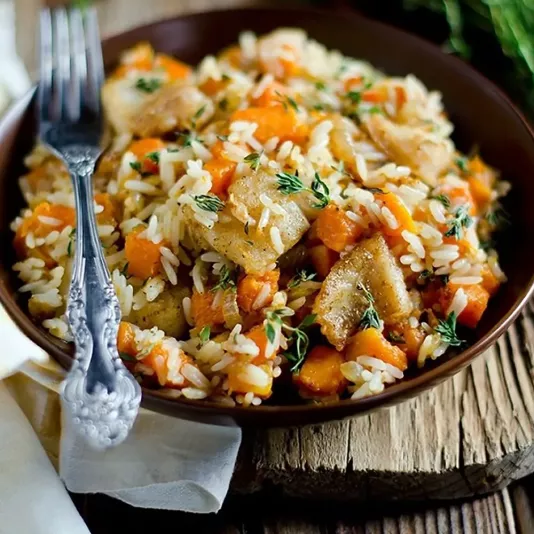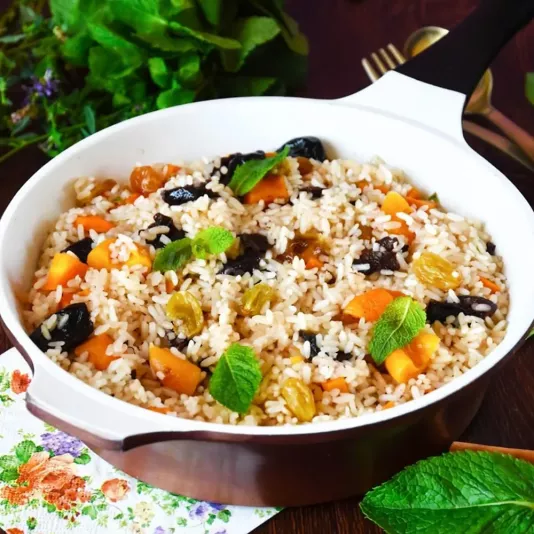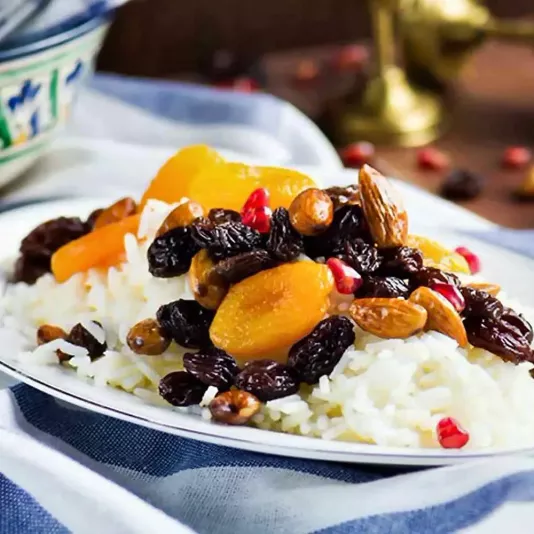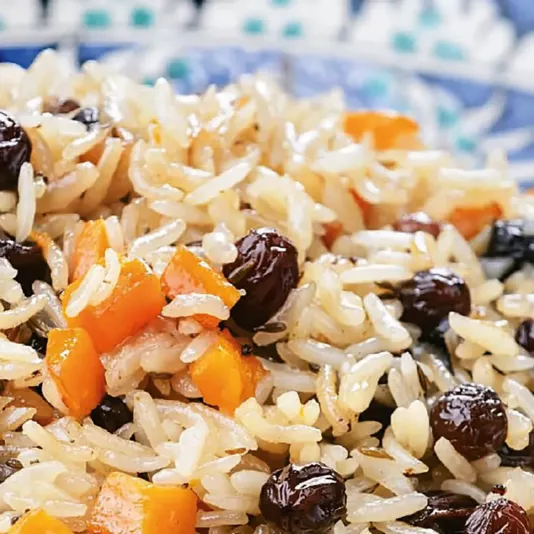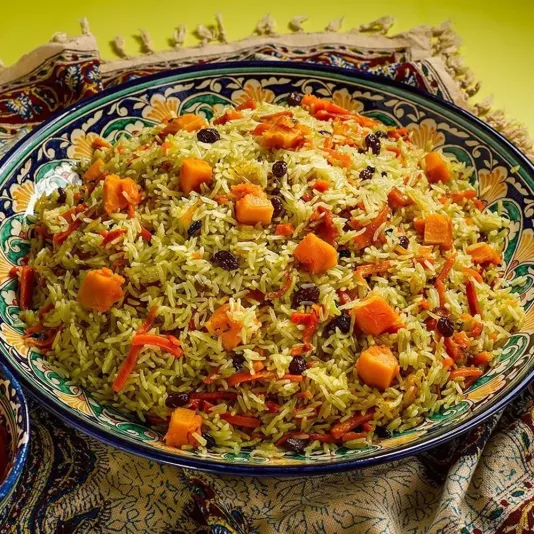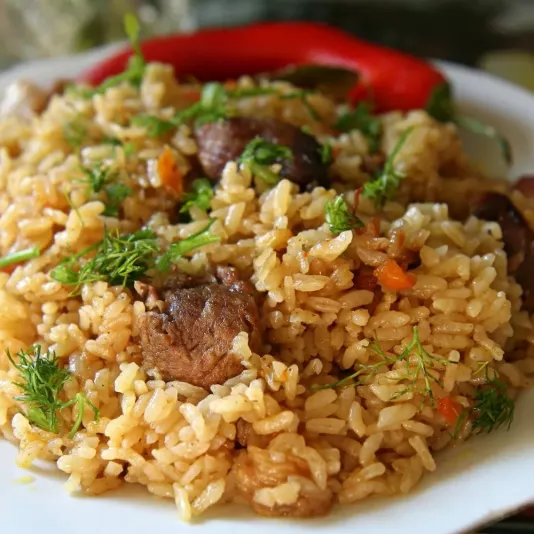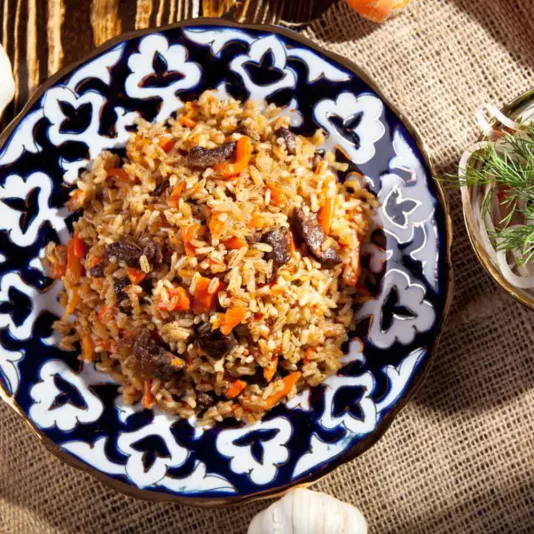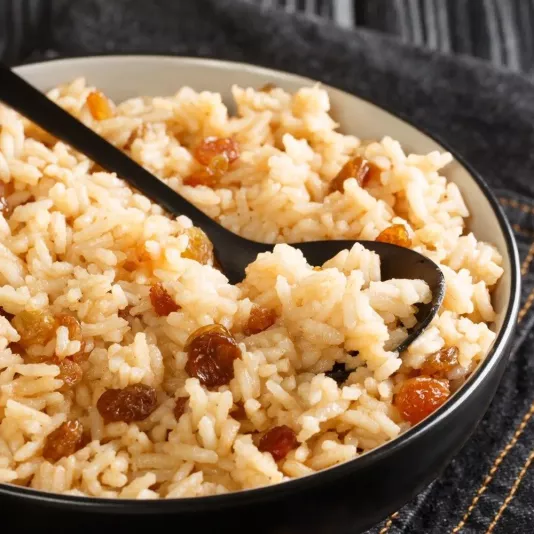Pilaf
Pilaf is a dish that always evokes in me a sense of warmth and calm. Over the years of cooking, I have learned to understand its nature. In pilaf, not only the recipe matters but also attention to detail: how to rinse the rice, what thickness to choose for the carrot slices, and when exactly to add the spices. If even one step is skipped, the result will not be perfect. I always cook pilaf in a thick-walled cauldron because it provides the proper even heat. After cooking, I always let it rest for a few minutes under the lid – this is when all the aromas merge, the rice absorbs the juices, and the dish gains its complete flavor. When I lift the lid, a thick aroma of spices and fried meat appears, instantly awakening the appetite. Pilaf is not just a dish – it is the embodiment of patience, precision, and love for cooking.
Pilaf Recipes
In my experience, I have repeatedly found that the success of pilaf begins with choosing the right rice. Long-grain varieties are the best because they hold their shape and do not turn into porridge. I rinse the rice several times until the water becomes completely clear – this removes excess starch and allows the perfect fluffy texture. After that, the rice rests in cool water while I prepare the base – zirvak. I fry the meat in well-heated oil until it develops a rich crust, then add onions to soften and add sweetness. Only then do I add carrots cut into thick strips so they do not overcook. When all ingredients start releasing their aromas, I pour rice in an even layer, add hot water, cover, and no longer stir. This simple principle ensures fluffiness. I teach young cooks never to rush – true pilaf requires time so that each grain absorbs the flavor. After removing it from the heat, the pilaf must rest for at least half an hour: only then will the aroma and texture become perfect.
Choosing Meat for Pilaf
Over many years of cooking, I have realized that the choice of meat shapes the character of pilaf. For a deep flavor, I use lamb – it gives the dish noble richness. For a milder version, beef works perfectly, and for a light everyday option – chicken. The main thing is that the meat is not too lean: a small amount of fat is needed for juiciness. Before frying, the meat must be at room temperature – cold meat releases juice immediately and loses flavor. I fry it to a golden crust slowly, so the juices stay inside. Then I add onions and carrots to create a fragrant base. I often use pieces with bone – they enrich the broth and add depth of flavor. In my experience, the main mistake is overcooking the meat. It should become tender but not fall apart since structure preserves harmony in the final dish. Only when the meat is well infused can you add rice and spices. This approach guarantees a rich aroma and perfect texture.
Spices and Aroma
I always say that without spices, pilaf is just rice with meat. It is the spices that create character, adding shades and depth. I rub cumin between my fingers before adding it – this releases its essential oils and gives a warm, spicy aroma. I add barberry at the end so its light sourness remains fresh and doesn’t burn out. Garlic is essential for me – whole heads simmer directly in the pilaf without falling apart. They give a soft aroma that pairs beautifully with the meat. Sometimes I add a bit of turmeric for color and a few coriander seeds. But I always remember: spices should emphasize, not overpower, the flavor. The best pilaf is when the aroma is rich yet balanced, and each component is distinct. In my practice, I’ve learned to listen to the smell – when it becomes warm, harmonious, and not sharp, I know: the dish is reaching perfection.
The Role of Cookware and Temperature
From experience, I know that without the right cookware, it’s impossible to make good pilaf. A cauldron with thick walls is my main assistant. Its heat distributes evenly, and the rice cooks from both top and bottom simultaneously. If you use a regular pot, the bottom layer will burn, and the top will remain raw. I always heat the cauldron gradually, without sudden temperature changes, so the oil doesn’t burn. When a light smoke appears, it’s time to start frying the meat. Everything must be done over medium heat – slowly but confidently. After the rice has absorbed the water, I reduce the flame to a minimum and cover it tightly. This allows the steam to pass evenly through all layers. After cooking, it’s important not to open the cauldron immediately – the dish must “mature”. Only then do the grains become elastic and the aroma deepens. I never skip this pause because it’s what distinguishes real pilaf from an ordinary rice dish.
Common Mistakes and How to Avoid Them
Most often, pilaf fails because of haste or neglecting details. If you pour water by eye, the rice may overcook or stay hard. I always follow the proportion: one part rice to one and a half parts hot water. It’s important to add it slowly, in a thin stream, so as not to destroy the layers. Another common mistake is stirring the rice after adding water. This must not be done: the grains should cook calmly, without movement, to stay whole. Young cooks often use grated carrots, but that adds too much moisture. I always recommend cutting them into strips. Also, never forget to let the dish rest after cooking. If you serve pilaf immediately, it will seem wet and unstable in taste. But if you let it infuse, all ingredients unite in a harmonious composition. And one more rule: don’t be afraid to cook pilaf several times – each experience improves your sense of proportion and taste.
Serving and Storage
After cooking, I always cover the pilaf with a towel and let it rest. This preserves the warmth and aroma. When serving, I use a wide plate so the rice doesn’t compress, and I fluff it with a spoon, allowing the steam to escape. I always serve pilaf with something fresh – like a salad of tomatoes or radish that accentuates the flavor and refreshes. If any dish remains, I let it cool gradually, not immediately in the refrigerator, to avoid condensation. I store it in an airtight container for no more than two days. I reheat it only in a dry pan or with steam – in the microwave, pilaf loses its texture. Even the next day, it remains delicious if made properly. In my family, this dish is always associated with home warmth and care. I cook it unhurriedly, with the same attention with which I once learned from my elders. And every time I lift the lid of the cauldron, I feel the same pride: here is real pilaf – fluffy, fragrant, made with love.
